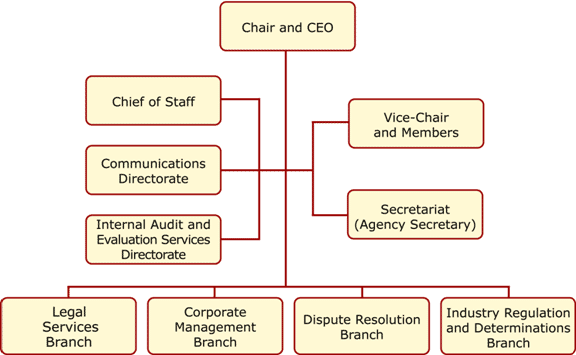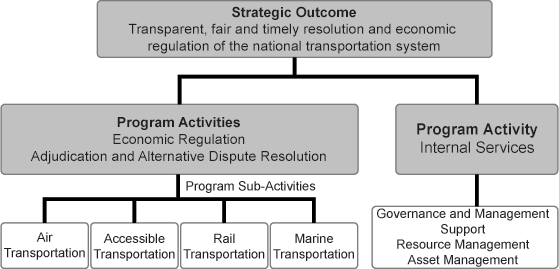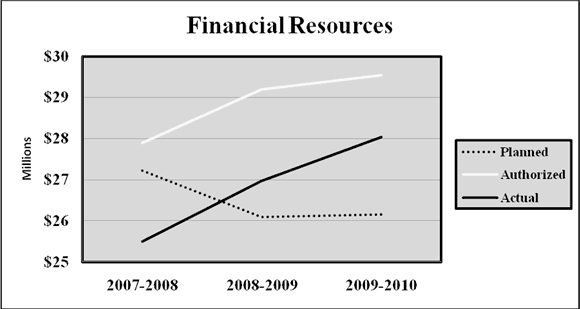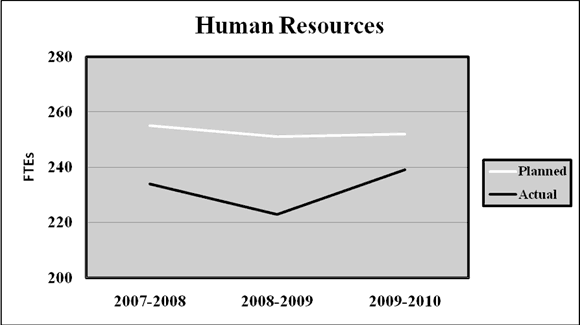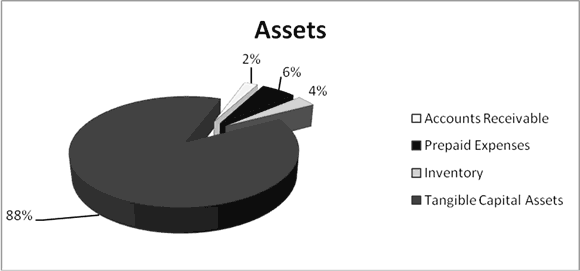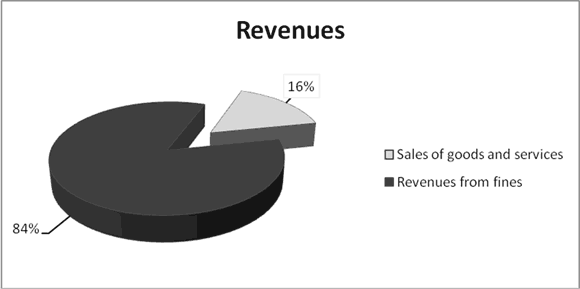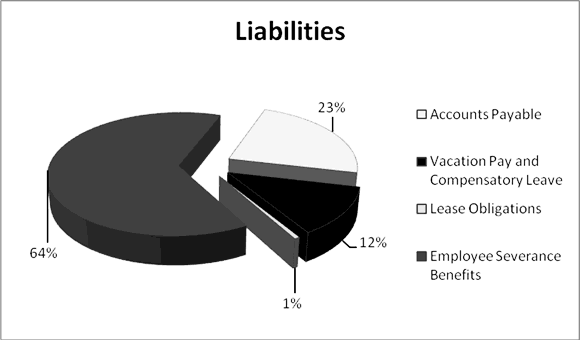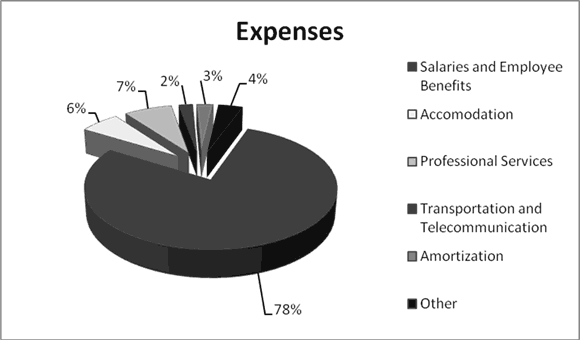ARCHIVED - Canadian Transportation Agency - Report
 This page has been archived.
This page has been archived.
Archived Content
Information identified as archived on the Web is for reference, research or recordkeeping purposes. It has not been altered or updated after the date of archiving. Web pages that are archived on the Web are not subject to the Government of Canada Web Standards. As per the Communications Policy of the Government of Canada, you can request alternate formats on the "Contact Us" page.
2009-10
Departmental Performance Report
Canadian Transportation Agency
The original version was signed by
The Honourable Chuck Strahl, P.C., M.P.
Minister of Transport, Infrastructure and Communities
Table of Contents
- Message from the Chair and Chief Executive Officer
- Section I: Overview
- Section II: Analysis of Program Activities by Strategic Outcome
- Section III: Supplementary Information
Message from the Chair and Chief Executive Officer
The Canadian Transportation Agency's 2009–2010 Departmental Performance Report summarizes the measures taken by the organization to solidify its place as one of the country's leading tribunals through leadership, impartiality and consistency.
Major updates for a number of regulatory frameworks also got underway, such as for marine coasting trade, rail interswitching, and cost of capital methodology for railways — all of which will support the Agency's goal of providing transparent, fair and timely dispute resolution and economic regulation of the national transportation system.
The Agency also responded to a series of ministerial directives in respect of a Canada-United States dispute involving professional sports team air charters and accepted tariff filings to reflect commitments made by air carriers as part of the Government of Canada's “Flight Rights” initiative.
As part of its mandate to make transportation accessible to all, the Agency became one of the first Government of Canada organizations to make publications available for download in DAISY format — a digital “talking book” that makes content accessible to persons who are blind or have a visual impairment. It also released new guidelines to assist air carriers in implementing provisions of the Code of Practice: Aircraft Accessibility for Persons with Disabilities.
On a broader level, the Agency sought feedback from transportation service providers and users through a new client satisfaction survey program. Preliminary results available at this stage validated the key corporate priorities of the Agency's three-year Strategic Plan adopted in 2008, and the many actions that have been taken to implement the Plan.
The Agency continued to face workload challenges this year as a result of increased responsibilities, more complex cases, and staff retirements. The organization nonetheless remained proactive in addressing these and other issues by quickly adapting its internal processes to ensure resources were appropriately deployed.
By working closely with its clients and stakeholders and other government departments, the Agency supports the goal of achieving a national transportation system that is competitive, efficient and accessible to all.
Finally, recent and upcoming Agency initiatives point to a future that will see further improvements to the Agency's service levels and standards, an evolution which is fully consistent with government-wide objectives on efficiency and responsiveness.
Geoffrey C. Hare
Chair and Chief Executive Office
Section I: Overview
Raison d'être
The Canadian Transportation Agency is an independent administrative body of the Government of Canada. It performs two key functions within the national transportation system:
- as a quasi-judicial tribunal, the Agency, informally and through formal adjudication, resolves a range of commercial and consumer transportation-related disputes, including accessibility issues for persons with disabilities. It operates like a court when adjudicating disputes; and
- as an economic regulator, the Agency makes determinations and issues authorities, licences and permits to transportation carriers under federal jurisdiction.
Our Mandate
To administer the economic regulatory provisions of Acts of Parliament affecting all modes of transport under federal jurisdiction.
Our Mission
To assist in achieving a competitive, efficient and accessible transportation system through dispute resolution, essential economic regulation and communication in a fair, transparent and timely manner.
Our Vision
To be a respected, leading tribunal contributing to a competitive and accessible national transportation system efficiently meeting the needs of users and service providers and the Canadian economy.
Visit our Web site for more on the Agency's role and vision1.
Responsibilities
By administering transportation regulations and providing dispute resolution services, the Agency ensures that transportation users, commercial shippers and individual travellers receive the protection provided for them in the legislation where market forces alone do not result in fair, reasonable service, and ensures that carriers meet basic public policy requirements before engaging in transportation activities. In doing so, the Agency continually sets and strives to achieve high performance standards.
Education and consultation are integral to the Agency's effectiveness in carrying out its mandate. The Agency works closely with transportation service users and providers in Canada and with other stakeholders directly affected. It helps travellers, shippers, carriers, municipalities and others to fully understand not only their rights and obligations under the Canada Transportation Act, but also the Agency's roles and responsibilities.
When appropriate, the Agency encourages parties to resolve disputes informally before issues escalate and impact the transportation system. The Agency consults broadly on issues that are important to the transportation industry. By remaining open and by listening to all affected parties, the Agency ensures that its decisions are both responsive and responsible.
The Agency exercises its powers through its Members who are appointed by the Governor in Council (GIC): the GIC may appoint up to five full-time Members, including the Chair and Chief Executive Officer (CEO), and the Vice-Chair. The Minister of Transport, Infrastructure and Communities can also appoint up to three temporary Members.
The Chair and CEO is accountable for the Agency's three program activities. The Vice-Chair replaces the Chair and CEO during his absence. All Agency Members are accountable for making quasi-judicial decisions on matters before the Agency.
Agency Organization Chart
The Agency's organizational structure is composed of four branches: the Dispute Resolution Branch, the Industry Regulation and Determinations Branch, the Legal Services Branch and the Corporate Management Branch. The heads of each branch, as well as the Communications Directorate, the Internal Audit and Evaluation Services Directorate, and the Secretariat Directorate, report directly to the Chair. The Agency implemented this new organizational structure in 2008–2009 to integrate a modal approach (air, accessible, rail and marine) within a functional business delivery model to allow the Agency the flexibility to effectively deal with evolving workload and resource challenges while still meeting client-driven demands. This structure also creates greater opportunities for learning and professional development, more variety in work assignments and internal mobility for employees between directorates and branches.
The Agency's headquarters are located in the National Capital Region. Agency personnel working in field offices in six cities across Canada carry out air and accessibility enforcement activities. The Agency's role and structure2 are described on its Web site.
Parliament funds the Agency through an operating expenditures vote. The Agency operates within the context of the very large and complex Canadian transportation system3.
Strategic Outcome and Program Activity Architecture (PAA)
PAA Crosswalk
As approved by the Treasury Board, the Agency modified its PAA for 2009–2010 with the following change to its program activities:
| 2008–2009 | 2009–2010 |
|---|---|
|
|
The sole program activity was divided into three program activities following changes to the Agency's organizational structure. The Agency regulates the national transportation system (air, rail and marine) through the administration of laws, regulations, voluntary codes of practice, education and outreach programs, and adjudicates disputes between users of, service providers within and others affected by the national transportation system. With this clear distinction between activities, the expected results, performance measures and resource requirements are more closely linked to how the Agency delivers its mandate.
Summary of Performance
Financial and Human Resources Information
The resources used in relation to the Strategic Outcome in fiscal year 2009–2010 are summarized in the following tables.
| Planned Spending | Total Authorities | Actual Spending |
|---|---|---|
| 26,152 | 29,544 | 28,041 |
| Planned | Actual | Difference |
|---|---|---|
| 252 | 239 | -13 |
| Performance Indicator | Targets | 2009–2010 Performance |
|---|---|---|
| Feedback from users of, service providers within, and others affected by the national transportation system on perceived transparency, fairness, and efficiency of the decision-making process. | Conduct benchmark surveys and set targets. | Met performance target. Conducted survey and collected preliminary data. Benchmarks will be determined upon analysis in fall 2010. |
| Conduct subsequent survey. | Continued and broadened surveying is scheduled for 2010–2011. | |
| Percentage of discretionary rulings overturned by the Federal Court of Appeal on basis of procedural fairness. | 0% | Met performance target. |
| Percentage of cases resolved within prescribed time limits. | Disputes resolved formally: 65% resolved within 120 days. | 43%[i]. Did not meet performance target. |
| Determinations: 95% issued within 120 days. | 97%. Exceeded performance target. | |
| Licences: 85% issued within 14 days. | 90%. Exceeded performance target. | |
| Charter permits: 92% issued within 30 days. | 91%. Mostly met performance target. | |
| Mediation: 100% completed within 30 days (when no extension is requested). | 100%. Met performance target. |
| Program Activity[ii] | 2008–2009 Actual Spending | 2009–2010[iii] | Alignment to Government of Canada Outcomes | |||
|---|---|---|---|---|---|---|
| Main Estimates | Planned Spending | Total Authorities | Actual Spending | |||
|
Economic Regulation |
10,304 | 11,902 | 11,902 | 13,324 | 12,324 |
A fair and secure marketplace |
|
Adjudication and Alternative Dispute Resolution |
6,766 | 6,584 | 6,584 | 7,477 | 7,261 | |
|
Internal Services |
9,915 | 7,666 | 7,666 | 8,743 | 8,456 | |
|
Total |
26,985 | 26,152 | 26,152 | 29,544 | 28,041 | |
Explanation of variances
Planned spending to total authorities: from $26.1 million to $29.5 million
Planned spending for 2009–2010 was $26.1 million, whereas the total authorities for the Agency are $29.5 million, representing a change of $3.4 million. The differences are primarily due to the following increases:
- approved collective agreements and other associated benefits ($1.4 million);
- reimbursement of eligible paylist expenditures ($0.9 million); and
- operating budget carry-forward of 2008–2009 ($1.1 million).
Actual spending to total authorities: from $28.0 million to $29.5 million
The difference of $1.5 million is mainly for the following reasons:
- $1.1 million in operating expenditures that are deferred and carried forward to 2010–2011;
- $0.2 million received from the collective agreement of excluded members from the Law (LA) group that is eligible to be carried forward and that will be distributed during the 2010–2011 Supplementary Estimates (B); and
- $0.2 million in general lapses due to delays in contracts and the reassessment of certain projects.
Contribution of Priorities to Strategic Outcome
| Priority | Type | Performance Status | Link to Strategic Outcome |
|---|---|---|---|
|
Effective dispute resolution and economic regulation |
Ongoing | Mostly met and ongoing | The Agency has a triennial strategic plan for 2008–2011 with an overarching objective to firmly establish the Agency as a leading tribunal of the Government of Canada. This is accomplished by focusing on these five priorities, which are directly linked to the Agency's strategic outcome of providing transparent, fair and timely dispute resolution and economic regulation of the national transportation system. |
|
Focusing on people as its greatest asset |
Ongoing | Mostly met and ongoing | |
|
Enhanced internal and external relations through clear and timely communications |
Ongoing | Mostly met and ongoing | |
|
Accessible transportation network without undue obstacles to the mobility of persons |
Ongoing | Mostly met and ongoing | |
|
Organizational support and responsiveness through superior management practices |
Ongoing | Mostly met and ongoing |
A summary of the Agency's key accomplishments for these priorities during 2009–2010 is as follows:
Effective dispute resolution and economic regulation
- Complied with ministerial directives related to a Canada-United States dispute involving professional sports team air charters, one of which called for an investigation into the carriage of passengers by U.S. carriers solely between Canadian cities;
- Supported the negotiation of important bilateral air transport treaties;
- Accepted tariff filings from Air Canada, Jazz, WestJet and Air Transat reflecting commitments made by these airlines as part of the Government of Canada's “Flight Rights” initiative;
- Encouraged Canadian air carriers to put their tariffs into plain language, helping Canadians make informed decisions about their travel arrangements;
- Made a determination stating that the rail link to Toronto's Lester B. Pearson International Airport proposed by the Union-Pearson AirLink Group is not under federal jurisdiction;
- Launched initiatives to update a number of regulatory frameworks administered by the Agency, on matters such as marine coasting trade, railway interswitching, and cost of capital methodology; and
- Announced that the revenues of the Canadian National Railway Company for the movement of Western grain had exceeded its revenue cap for crop year 2008–2009, while those of the Canadian Pacific Railway Company for the same period were below its cap.
The Agency's people as its greatest asset
- Mandated the creation of an employee-led working group (EWG) tasked with developing solutions to issues highlighted in the Public Service Employment Survey, engaged in an extensive consultation process with staff and management on sustaining a respectful workplace, and implemented concrete actions brought forward by the EWG to ensure that the Agency remains a workplace of choice;
- Continued to implement knowledge transfer projects, student recruitment initiatives and developmental opportunities for staff; and
- Developed new competency profiles and learning roadmaps for certain positions.
Enhanced internal and external relations
- Published a number of publications to assist Canadians in resolving transportation-related disputes, such as Rail Noise and Vibration Complaints: Working together towards solutions;
- Began implementing a client satisfaction survey framework and collecting benchmarking data on client satisfaction;
- Initiated a number of consultations with stakeholders and clients within the national transportation network in order to better serve Canadian consumers and transportation providers;
- Implemented a client-centred inquiry service delivery model to respond to inquiries from the general public. This integrated system allows for the tracking and analysis of inquiries and increased consistency of messaging;
- Began the complete overhaul of the Agency's intranet through an Intranet Working Group that reviewed the site's content and provided feedback. The old site was significantly streamlined in advance of the migration to the new intranet site, launched in May 2010; and
- Compiled an inventory of stakeholder outreach activities taking place within the Agency and presented recommendations to the Executive Committee, which were adopted.
A more accessible transportation network
- Released guides to assist air carriers in implementing provisions of the Code of Practice: Aircraft Accessibility for Persons with Disabilities related to space for service dogs and tactile row markers;
- Made significant progress in resolving disputes related to the appropriate accommodation of air travellers disabled as a result of their allergies;
- Became one of the first federal government bodies to make publications available for download in DAISY format — a digital talking book that makes print publications accessible to persons who are blind or have a visual impairment; and
- Launched innovative accessible electronic formats of Take Charge of Your Travel, a popular Agency publication that helps persons with disabilities plan their trips from start to finish.
Organizational support and responsiveness
- Addressed a number of dispute case processing issues and implemented process improvements and new practices that promote increased productivity, efficiency and consistent quality; and
- Adopted a revised Case Management Policy that will support better tracking of the progress of case files, increasing work efficiency and promoting best practices.
Link to the Government of Canada Outcome Areas
The Agency's strategic outcome and program activities are directly aligned with the broader Government of Canada strategic outcome of a fair and secure marketplace. The Agency's regulatory programs are designed to resolve economic issues, remove transportation barriers and protect the rights of consumers, carriers and other interested parties. These programs help improve the overall quality of life in Canada, providing all Canadians with an efficient and accessible transportation system.
The Agency is one of many players involved in transportation and it maintains close ties with its various co-delivery partners4, including Transport Canada, the Department of Foreign Affairs and International Trade, the Canada Border Services Agency and the Canadian Human Rights Commission.
Risk Analysis
The Agency has established itself as a respected and valued economic regulator and expert tribunal for transportation and human rights issues by maintaining its independence from outside influence, by the impartiality it has demonstrated in handling cases, the integrity and timeliness of its procedure, its expertise in transportation and transportation-related human rights matters, and the deference that the Federal Court of Appeal and the Supreme Court of Canada have shown the Agency regarding its decisions. The Agency has also been sensitive to its clients by adapting its processes to their needs and being responsive to changing environments. To maintain this reputation, the Agency must continue to be attentive to all of these aspects of its role as an economic regulator and quasi-judicial administrative tribunal.
The Agency continued to integrate risk management into its strategic planning process and encouraged effective risk management in 2009–2010. Course corrections were made based on risk management performance and new information. The Legal Services Branch put in place a Legal Risk Management Framework and the Agency is part of the Interdepartmental Advisory Committee on Legal Risk Management.
The Agency remains proactive in monitoring and addressing any changes in resource requirements. This is accomplished through dialogue with stakeholders (clients, federal government partners, Parliamentarians, the Minister of Transport and special interests groups), which allows the Agency the opportunity to address and adapt internally, and to ensure it has sufficient resources (financial and human) that are properly deployed.
As identified in its Report on Plans and Priorities, the Agency continued to face fundamental workload challenges as a result of increased responsibilities, more complex cases, limited budget and employee retirements. A working group created as a result of the new organizational structure continued its work addressing case processing challenges and finding effective ways to deal with them. The working group developed a series of tools to improve efficiency and consistency in the management of formal cases and is promoting training to assist staff in using these tools.
The complexity of cases treated by the Alternative Dispute Resolution (ADR) Directorate also increased. Given that the number and complexity of ADR cases is not predictable since it is client driven, this creates a possible resources challenge for the Directorate. To mitigate this risk, the Agency has a roster of mediators that would address potential increases in demand beyond the capacity of the ADR Directorate.
The retention of knowledge and expertise is critical to maintain the level of service already provided, as well as to adapt to additional responsibilities. The changing demographics of the Public Service workforce and of the Agency in particular present a significant human resource management challenge. The Agency is at risk of losing corporate knowledge and expertise over the next few years as long-term key employees with knowledge and experience unique to the Agency face retirement. The Agency has made significant strides through initiatives that support recruiting, retaining and developing highly competent staff with the capabilities to ensure there is a transfer of knowledge and expertise to continue supporting the Agency's mandate.
The Agency maintained its education and consultation processes, which are integral to the Agency effectively dealing with the challenges of a changing environment and allowing it to be more responsive to Canadians and national economic objectives.
Expenditure Profile
When a new organizational structure was implemented on April 1, 2008, the Agency's staff vacancy rate was at 20% due to pending staffing processes and a high retirement rate. Management and human resources staff made a concerted effort to fill vacant positions through external and collective processes, and on March 31, 2010, the vacancy rate was at 7%, closing the gap on a target of 5%. Through effective human resources planning, the Agency will continue to run collective staffing processes to develop pools of qualified candidates for upcoming vacancies.
Voted and Statutory Items
| Vote # or Statutory Item (S) | Truncated Vote or Statutory Wording | 2007–2008 Actual Spending | 2008–2009 Actual Spending | 2009–2010 Main Estimates | 2009–2010 Actual Spending |
|---|---|---|---|---|---|
|
Canadian Transportation Agency |
|||||
| 25 |
Operating expenditures |
22,423 | 23,919 | 22,933 | 24,626 |
| (S) |
Spending of proceeds from the disposal of surplus Crown assets |
0 | 17 | 0 | 0 |
| (S) |
Contributions to employee benefit plans |
3,069 | 3,049 | 3,219 | 3,415 |
| Total | 25,492 | 26,985 | 26,152 | 28,041 | |
[i] Includes a number of cases involving complaints by air travellers with disabilities related to allergies for which the processing time was prolonged due to the need for expert research and opinions.
[ii] Numbers for each program activity include contributions to employee benefit plans.
[iii] Commencing in the 2009–2010 Estimates cycle, the resources for the Internal Services program activity are displayed separately from other program activities; they are no longer distributed among the remaining program activities, as was the case in previous Main Estimates. This has affected the comparability of spending and FTE information by program activity between fiscal years.
Section II: Analysis of Program Activities by Strategic Outcome
The Agency is both an economic regulator and a quasi-judicial tribunal. It regulates the national transportation system (air, rail and marine) through the administration of laws, regulations, voluntary codes of practice, and education and outreach programs. It adjudicates disputes between users of, service providers within and others affected by the national transportation system.
As a regulator, the Agency has a mandate to administer the economic regulatory provisions affecting all modes of transportation under federal jurisdiction found in various Acts of Parliament. In 2009–2010, the Agency:
- issued 2,609 discretionary and administrative rulings to support the effective regulation of the national transportation system;
- after reviewing compliance with the air licensing requirements, processed 1,545 air licensing activities, including applications for new licences as well as suspensions, cancellations and reinstatements;
- issued 1,440 charter permits;
- participated in the negotiation of bilateral air agreements with Cuba, El Salvador, Ethiopia, Japan, Morocco, South Africa and Tunisia;
- varied one certificate of fitness for BNSF Railway to reflect the sale of a portion of track;
- determined the jurisdictional status of a proposed construction of a passenger rail link project;
- determined that third party liability coverage was adequate following Logistic Corporation's acquisition of Sydney Coal Railway Inc.;
- determined that the Canadian Pacific Railway Company did not exceed its revenue entitlement under the revenue cap regime for Western grain, while the Canadian National Railway Company exceeded its cap by $683,269. Since this amount exceeds the cap by less than 1%, CN was ordered5 to pay the amount by which it exceeded the cap plus a penalty of 5% ($34,163) to the Western Grains Research Foundation;
- considered 102 coasting trade applications to protect the interests of the Canadian marine industry and allow foreign ships when no suitable Canadian ships were available; and
- undertook 159 inspections resulting in the issuing of 33 informal warnings, 12 formal warnings and 12 notices of violation.
As an adjudicator, the Agency resolves transportation issues within the national transportation system either by investigating and making formal tribunal decisions on complaints and ordering corrective measures as required, or by helping parties resolve their issues through the alternate dispute resolution processes of mediation or facilitation. In 2009–2010, the Agency:
- resolved 425 dispute cases of which 366 were through facilitation, 12 through mediation and 47 were resolved through formally adjudicated decisions;
- dealt with 53 accessibility cases;
- published two decisions where it concluded that certain air travellers with allergies to nuts, peanuts and cats may be persons with disabilities due to their allergies for the purposes of the accessible transportation provisions of the Act;
- published guidance material concerning provisions of its Code of Practice: Aircraft Accessibility for Persons with Disabilities;
- processed 642 air travel complaints;
- was involved in nine environmental assessment processes for proposed rail line construction, road and utility crossing projects, and issued three decisions giving authority to construct railway lines; and
- processed 111 agreements filed by parties that had successfully conducted their own negotiations related to rail crossings.
Strategic Outcome
| Performance Indicators | Targets | Performance Status | Performance Summary |
|---|---|---|---|
| Feedback from users of, service providers within, and others affected by the national transportation system on perceived transparency, fairness, and efficiency of the decision-making process. |
Conduct benchmark surveys and set targets. Conduct subsequent survey. |
Conducted survey and collected preliminary data. Benchmarks will be determined upon analysis in fall 2010, and continued and broadened surveying is scheduled for 2010–2011. | Met performance target. Conducted 31 in-depth qualitative interviews with senior officials from major transportation providers and associations; also surveyed participants in mediations and facilitated travel-related cases, with 72 responses received in total. |
| Percentage of discretionary rulings overturned by the Federal Court of Appeal on basis of procedural fairness. | 0% | 0% | Met performance target. An alleged breach of the rules of fairness was raised on six cases at the Federal Court of Appeal. Four were denied at the motion for leave to appeal stage, one was discontinued and another was denied at the appeal stage. |
|
Percentage of cases resolved within prescribed time limits. |
Disputes resolved formally: 65% resolved within 120 days. | 43% | Did not meet performance target. The complexity of formal cases on which the Agency must rule has increased, and as a result, more cases took greater than 120 days to resolve. A priority in 2009–2010 was to re-engineer the Agency's approach to case management to improve efficiency, quality and consistency of decisions in 2010–2011 and beyond. |
| Determinations: 95% issued within 120 days. | 97% | Exceeded performance target. | |
| Licences: 85% issued within 14 days. | 90% | Exceeded performance target. The Agency processed 154 new air licence applications, out of which 138 were processed within 14 days of the application being complete. | |
| Charter permits: 92% issued within 30 days. | 91% | Mostly met performance target. A significant number of applications for sports team charters required approval following ministerial directives | |
| Mediation: 100% completed within 30 days (when no extension is requested). | 100% | Met performance target. The Agency's mediation success rate is 83%. Two cases were not resolved through mediation and were referred back for adjudication; one case was subsequently withdrawn. |
In order to successfully deliver its strategic outcome, the Agency divides its programs into three activities (economic regulation, adjudication and alternative dispute resolution, and internal services), which are explained in the following logic model.
Canadian Transportation Agency - Logic Model
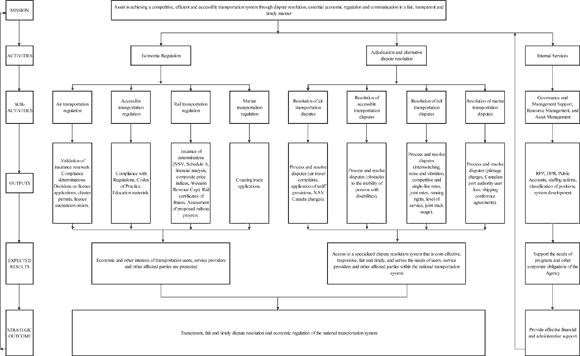
[PDF Format][Description of the image]
Program Activity: Economic Regulation
|
2009–2010 Financial Resources |
2009–2010 Human Resources |
||||
|---|---|---|---|---|---|
| Planned Spending | Total Authorities | Actual Spending | Planned | Actual | Difference |
| 11,902 | 13,324 | 12,324 | 119 | 113 | -6 |
Description
Within the specific powers assigned to it by legislation, the Agency participates in the economic regulation of modes of transportation under federal jurisdiction, including:
- licensing air and rail carriers and acting as one of Canada's aeronautical authorities;
- determining whether terms and conditions of air travel are just and reasonable;
- approving the adequacy of the protection of advance payments made by charter companies contracting with air carriers;
- setting railway revenue caps for moving Western grain;
- setting financial and costing frameworks for certain federally regulated railways;
- issuing certificates of fitness for federally regulated railways;
- setting interswitching rates and establishing the net salvage value of railway lines to facilitate their orderly transfer; and
- determining if Canadian ships are available and suitable to perform services that a resident of Canada has requested be provided by foreign ships in Canadian waters.
The Government of Canada's national transportation policy permits the domestic market to self-regulate. However, it also acknowledges that regulation can be required to meet public objectives or in cases where parties are not served by effective competition.
| Expected Results | Performance Indicators | Targets | Performance Status | Performance Summary |
|---|---|---|---|---|
| Regulatory authorities required to operate publicly available air services are issued on a timely basis upon meeting the regulatory requirements. | Percentage of charter permits issued within 30 days. | 92% | 91% | Mostly met performance target. The small variance is due to a significant number of applications for sports team charters that required approval following Ministerial directives. Results are 95% when the 57 sports team charter cases are excluded. |
| Regulatory authorities required to operate publicly available air services are issued on a timely basis upon meeting the regulatory requirements. | Percentage of licences issued within 14 days. | 85% | 90% | Exceeded performance target. The Agency processed 154 new air licence applications, out of which 138 were processed within 14 days of the application being complete. |
| Compliance with the Canada Transportation Act and its attendant regulations. | Percentage of compliance with the requirements to hold a valid licence, insurance and Air Operator Certificate, as determined by inspections. | 100% | 100% | Met performance target. The Agency conducted 140 periodic air carrier inspections in 2009–2010 and found all air carriers to be compliant with those basic requirements. |
| Compliance with the Canada Transportation Act and its attendant regulations. | Percentage of compliance with requirements of the Act and regulations other than licence, insurance and Air Operator Certificate requirements, as determined by inspections. | 85% | 96% | Exceeded performance target. Of the 159 cases processed, 153 were closed within 120 days with parties complying with these requirements. |
| Enhanced monitoring of and compliance with accessibility regulations and codes of practice. | Level of compliance with accessibility provisions. | Development of new monitoring and compliance methodology and tools. | New monitoring and compliance methodology and tools were implemented. | Met performance target. |
| Conduct monitoring and set targets. | Monitoring of compliance conducted on targeted service providers for the Communications Code of Practice. | The Communications Code of Practice survey report released in 2009 identified key compliance issues. Follow-up action was taken to enhance compliance. | ||
| Conduct assessments and report on compliance. | Compliance assessments conducted and reports issued. | Compliance reports issued on requirements to provide accessible communications systems and information to persons with disabilities in accessible formats. | ||
| The Agency efficiently protects the interests of operators of Canadian registered ships while allowing access to foreign ships when suitable Canadian registered ships are not available. | Percentage of applications processed prior to the deadline. | 95% prior to the commencement date when no offers are made. | 100% | Met performance target. All applications without offers (82 in total) were processed before commencement date. |
| 80% issued within 90 days when offer is made. | 90% | Exceeded performance target. | ||
| Environmental, economic and social impacts of railway construction projects, railway lines and yards are mitigated. | Percentage of compliance with prescribed mitigation conditions as determined on follow-up. | 100% | 100% | Met performance target. |
| Regulatory authorities required in railway operations are issued on a timely basis upon meeting the regulatory requirements. | Percentage of determinations issued prior to specified timeline of 120 days. | 95% | 100% | Exceeded performance target. All three cases were processed within 120 days. |
Performance Analysis
The Agency met or exceeded its level of service targets with respect to its economic regulation program.
With respect to its change management agenda, the Agency had two primary objectives for this program, which were captured under two broad headings, namely: 1) to manage its caseload in a sound, responsive and efficient manner; and 2) to maintain up-to-date, relevant and clear regulatory frameworks.
To realize the first objective, the Agency adopted and implemented certain measures to streamline its decision-making process (standardization of decision letters for straightforward applications, removal of unnecessary internal reviews and approvals, standardization of material to be brought forward to Members); established a three-year plan for documenting and streamlining its approach for managing the caseload of its economic regulatory program; automated the production of charter permit documents; and continued to monitor and update its performance monitoring system.
With respect to the second objective, the Agency moved forward simultaneously on a number of fronts:
- It proactively responded to four ministerial directives and put in place on very short notice new frameworks for monitoring and authorizing professional sports team charters. This activity was not planned and resulted from the need to respond to an action initiated by the United States.
- It developed a plan in three phases for updating the Air Transportation Regulations and proposed regulatory amendments for the first phase, which is targeted for finalization in 2010–2011.
- It developed proposed draft guidelines for the processing of coasting trade applications and it conducted two rounds of consultation with the industry.
- It issued updated licence application guides for U.S. air carriers.
- It developed a monitoring and compliance framework that works towards achieving the Agency's goal of removing any undue obstacles to accessibility for passengers with disabilities.
- It released two compliance reports regarding the Code of Practice: Removing Communication Barriers for Travellers with Disabilities. The two reports, Multiple Format Policy Compliance Report and The Alternative Communications Systems Compliance Report, show how the code of practice is being adopted by service providers.
- It developed guidance material for Canadian air carriers to comply with provisions pertaining to tactile row markers and space for service animals in the Code of Practice for Aircraft Accessibility.
As part of its review of the interswitching rates, the Agency proposed substantive changes to the methodology it uses in determining interswitching costs incurred by the railway companies. As a result, it decided to initiate further consultations with stakeholders before finalizing the rates and proceeding to amend the current regulations.
Lessons Learned
The Agency adjusted its Performance Management Framework in light of the experience gained. Further significant improvements to its level of service standards will require a more fundamental look at its existing business processes and the role that automation and Web-based service solutions might play in this regard.
The Agency will continue to put more emphasis on its regulatory role to ensure that its regulations are up to date and reflective of government policies and priorities. More emphasis will be placed on enhancing the transparency of its decision-making processes. Using the forthcoming revised Coasting Trade Guidelines as a guide, the Agency will continue working towards a more comprehensive and up-to-date set of guidance documents to improve the transparency, predictability and fluidity of its decision-making processes for the different categories of applications under its authority.
Benefits for Canadians
By ensuring that legislative and essential regulatory requirements are met in a timely manner, the Canadian Transportation Agency contributes to an economic, efficient and safe transportation system meeting the needs of its users. It helps carriers to meet public sector objectives while not unduly restricting their business activities and it contributes to establishing a level playing field for all carriers operating in Canada through its impartiality, consistency and professionalism.
Program Activity: Adjudication and Alternative Dispute Resolution
|
2009–2010 Financial Resources |
2009–2010 Human Resources |
||||
|---|---|---|---|---|---|
| Planned Spending | Total Authorities | Actual Spending | Planned | Actual | Difference |
| 6,584 | 7,477 | 7,261 | 62 | 60 | -2 |
Description
The Agency participates in the resolution of disputes on matters related to the national transportation system, including:
- complaints related to air carriers' application of their tariff provisions and on prices applied by air carriers on non-competitive routes within Canada;
- appeals of new or revised air navigational charges imposed by NAV CANADA to ensure that principles used to establish them comply with legislation;
- disputes between shippers and rail carriers on issues such as rates, level of services, running rights and interswitching;
- disputes between railway companies and municipalities, road authorities, landowners and other stakeholders;
- complaints about user fees charged by Canadian port authorities, the St. Lawrence Seaway Management Corporation and the Federal Bridge Corporation;
- complaints related to actions taken by members of the marine industry that could reduce competition;
- objections to proposed pilotage charges and if these charges are fair, reasonable and in the public interest; and
- complaints concerning the level of accessibility of the national transportation network, in order to remove any undue obstacles to the mobility of persons with disabilities.
| Expected Results | Performance Indicators | Targets | Performance Status | Performance Summary |
|---|---|---|---|---|
| The Agency efficiently resolves complaints on air services, weighing the evidence submitted by the parties. | Percentage of disputes resolved formally within 120 days. | 70% | 44% | Did not meet performance target. Complexity of cases impacted the meeting of this target. |
| The Agency efficiently resolves complaints about obstacles to the mobility of persons with disabilities, weighing the interests of persons with disabilities with those of the industry in assessing whether the obstacle is undue. | Percentage of disputes resolved formally within 120 days. | 50% | 67% | Exceeded performance target. Implementation of new processes to enhance the efficiency and effectiveness of case processing contributed to the favourable results as did the greater percentage of accessible disputes being informally resolved. |
| The Agency efficiently resolves disputes by determining whether pilotage charges are in the public interest and whether port fees and seaway tolls are not unjustly discriminatory. | Percentage of disputes resolved formally within 120 days. | 70% | No disputes filed this year. | N/A |
| The Agency efficiently resolves disputes between shippers, farmers, landowners, road authorities, utility companies, all levels of government and railway companies. | Percentage of disputes resolved formally within 120 days. | 75% | 25% | Did not meet performance target. Complexity of cases had an impact on meeting this target. |
Performance Analysis
Although the Agency has addressed a number of dispute case processing issues, implemented process improvements and established new practices that promote increased productivity and efficiency, meeting the 120-day target for the resolution of complex cases through the formal adjudicative process continues to be a challenge. This challenge has been made even greater through the increasing share of formal cases that are more complex due to procedural requirements, complexity of the issues and, in some cases, the need for research and for expert opinions.
The Agency encourages parties to work together to either avoid disputes or resolve issues in a collaborative fashion. Informal dispute resolution processes offered by the Agency are quite effective when resolving straightforward disputes. Last year, over 88% of complaints brought by individual consumers were resolved informally by Agency staff, either through facilitation or mediation. Not only are acceptable solutions found relatively quickly, but both parties usually wind up saving considerable time and expense by resolving the issue without resorting to the Agency's formal adjudicative process —making this informal approach a true win-win situation.
However, cases that are not resolved through informal methods tend to be more adversarial in nature, adding to the complexity of these cases. Certain formal cases may also be without precedent, or raise broad systemic, policy or procedural issues. Therefore, additional information and time may be required by the parties and extensions of time are not uncommon.
Lessons Learned
The Agency re-engineered its formal adjudicative process to improve the timeliness of its decisions. To support this re-engineering, an extensive analysis was undertaken of all the steps of the adjudicative process. The analysis demonstrated that the 120-day deadline for issuing decisions leaves little leeway for many of the procedural issues that are frequently raised in adjudication and must be addressed to ensure natural justice is satisfied.
The Agency must be able to take the time it needs to carefully consider and weigh the evidence before it, with full due process provided to all parties. That responsibility, added to the increasing complexity of certain cases, makes it more difficult for the Agency to meet its 120-day performance target for such cases. Further actions will be taken to address this challenge. The Agency will conduct a review of the Canadian Transportation Agency General Rules to identify alternative approaches that would better respond to the differing needs of the Agency and its clients in disputes and determinations, as well as provide more, clearer guidance to self-represented parties appearing before the Agency. The Agency will also develop ways of stratifying cases based on complexity and establish more relevant performance targets. Also, a comprehensive, customized training program designed for case officers will be provided starting in 2010–2011.
Mediation is actively promoted by the Agency and is used to address cases having multiple issues of high complexity. As a result, the number of persons involved is increasing, as is the workload for each mediation. In 2009–2010, 100% of mediations were completed within the 30-day statutory deadline. However, in order to ensure that future performance targets are met, the current mediation service delivery framework is under review.
Benefits for Canadians
In exercising its adjudicative powers, the Agency employs processes that are responsive, fair and transparent, and considers the interests of all parties to disputes involving the national transportation system. Its adjudicative formal decision-making process is governed by the rules of natural justice and fairness.
Through its actions and by working closely with Transport Canada, other departments, its clients and stakeholder groups, the Agency supports the goal of a Canadian transportation system that is competitive, efficient and accessible — and that meets the needs of those who provide or use transportation services.
Program Activity: Internal Services
|
2009–2010 Financial Resources |
2009–2010 Human Resources |
||||
|---|---|---|---|---|---|
| Planned Spending | Total Authorities | Actual Spending | Planned | Actual | Difference |
| 7,666 | 8,743 | 8,456 | 71 | 66 | -5 |
Description
Internal services support the needs and programs and other corporate obligations of the Agency. They apply across the Agency and support the delivery of the Agency's plans and priorities, and are not specific to a program. For the Agency, this includes governance and management support, resource management and asset management.
Internal services refer to both the corporate functions that support the delivery of the Agency's plans and priorities as well as the specialized tribunal services that are an integral part of the delivery of the operational mandate of the Agency.
Corporate functions
- develops, maintains and implements integrated systems, policies, procedures, services, strategic planning and internal audit for the effective acquisition and stewardship of financial and material resources;
- provides effective and timely human resources services and advice to managers and employees;
- provides advice and support regarding internal and external strategies, activities and products in order to effectively meet the information needs of our clients and stakeholders; and
- provides advice and support on the management and use of information and technology;
Specialized tribunal services
- provides legal advice and counsel;
- provides editing, translation and quality control services for Agency proceedings; and
- provides registrar services and coordinates ministerial correspondence.
Performance Analysis
Succession plan
-
Gap analysis and identification of key positions and Agency vulnerabilities are completed annually as part of the Agency's integrated business and human resource planning exercise.
-
Agency recruitment strategy and knowledge management activities addressed vulnerabilities in 2009–2010 by focusing on areas that are identified as high risk through the human resources planning and employee performance review processes. There is still work to do to coordinate these activities into everyday human resources management programs such as staffing.
Recruitment strategy
-
The Agency Student Employment Program expanded in February 2010 to include co-op programs. Six students were hired through the program in 2009 and six more in 2010. The program will be monitored to determine the extent to which students hired under the program are bridged into the public service at the end of their studies.
-
Given the high position vacancy rate during 2008–2009 and 2009–2010, no pools were established since most qualified candidates were hired immediately at the end of the selection process. The Agency's position vacancy rate has decreased significantly and a proactive approach to staffing is being developed using the human resources planning exercise.
Knowledge management strategy
-
Generic competencies for all positions are still being developed.
-
Pilot projects on knowledge management were conducted in 2008–2009 to identify best practices and opportunities continue to be implemented on an ad hoc basis.
Communications
-
An internal communications survey and consultations were conducted in 2009 to gain views and ideas on the intranet. Based on this feedback, a plan was set in motion to completely overhaul the intranet and an Intranet Working Group was formed to review the site's content. The old site was significantly streamlined in advance of the migration to the new site, which was launched in May 2010.
Lessons Learned
More work is needed to integrate human resources planning into everyday human resources management activities, such as staffing to increase staff availability when required and reduce the time between a position becoming vacant and someone being appointed.
Adequate resources are required to ensure that the intranet remains a useful and current information and knowledge-sharing tool for employees.
Benefits for Canadians
Effective recruitment, knowledge management and employee development programs ensure that Agency programs and services are delivered to Canadians accurately and efficiently by knowledgeable employees.
Section III: Supplementary Information
Financial Highlights
The Agency's financial statements6 can be found on its Web site.
| Condensed Statement of Financial Position At End of Year (March 31, 2010) |
|||
|---|---|---|---|
| % Change | 2010 | 2009 | |
| ASSETS | |||
| Total Assets | -11.3% | 2,772 | 3,125 |
| TOTAL | -11.3% | 2,772 | 3,125 |
| LIABILITIES | |||
| Total Liabilities | +8.9% | 8,093 | 7,435 |
| EQUITY | |||
| Total Equity | +23.5% | (5,321) | (4,310) |
| TOTAL | +32.3% | 2,772 | 3,125 |
| Condensed Statement of Operations At End of Year (March 31, 2010) |
|||
|---|---|---|---|
| % Change | 2010 | 2009 | |
| Expenses | +6.7% | 33,313 | 31,226 |
| Revenues | +69.9% | 124 | 73 |
| Net Cost of Operations | +6.5% | 33,189 | 31,153 |
Total assets were $2.8 million at the end of 2009–2010, a decrease of $0.4 million (11.3%) over the previous year's total assets of $3.1 million. Tangible capital assets represented $2.4 million (88%), prepaid expenses represented $0.2 million (6%), while inventory and accounts receivable represented 4% and 2% respectively of total assets.
The Agency's total revenues amounted to $123,737 for 2009–2010. There was a large increase of $50,268 (68.4%) from the previous year's revenue due to an increase in penalties. Almost all of the Agency's revenue is derived from two sources: penalties (fines) imposed on air carriers and transportation facilities ($103,447), and determining the net salvage value of railway assets during the discontinuance of a railway line ($20,065). All other levels of revenue were marginal for 2009–2010.
Total liabilities were $8.1 million at the end of 2009–2010, an increase of $0.7 million (8.8%) over the previous year's total liabilities of $7.4 million. Employee severance benefits and accounts payable represented the largest portion of total liabilities at $5.1 million and $1.9 million respectively.
The Agency's total expenses were $33.2 million in 2009–2010. The majority of funds, $26 million or 78%, were spent on salaries and employee benefits, 7% on professional services, 6% on accommodation and the remaining 9% going towards repair and maintenance, rentals, materials and supplies, and machinery and equipment.
List of Supplementary Information Tables
All electronic supplementary information tables found in the 2009–2010 Departmental Performance Report can be found on the Treasury Board of Canada Secretariat7 Web site.
Sources of Respendable and Non-Respendable Revenue
User Fees/External Fees
Response to Parliamentary Committees and External Audits
Internal Audits and Evaluations
Other Items of Interest
Annual Reports
The Agency's annual reports8 from 1997 to 2010 are available on its Web site.
Contacts for Further Information
| Area of Responsibility | Contact Name | Title | Telephone Number and E-mail Address |
|---|---|---|---|
| Legal Services | Claude Jacques | General Counsel |
819-997-9323 |
| Dispute Resolution | Nina Frid | Director General |
819-953-5074 |
| Industry Regulation and Determinations | Ghislain Blanchard | Director General |
819-953-4657 |
| Corporate Management | Arun Thangaraj | Director General |
819-997-6764 |
| Finance, Administration and Planning | Michel LeBlanc | Director |
819-953-2829 |
| Communications |
Jacqueline Bannister |
Director |
819-953-7666 |
| Secretariat | Cathy Murphy | Secretary |
819-997-0099 |
Postal address:
Canadian Transportation Agency
Ottawa, Ontario, Canada K1A 0N9
Web site:
http://www.otc-cta.gc.ca/
Legislation and Regulations
The Agency is responsible for the following Act:
Canada Transportation Act, S.C., 1996, c. 10, as amended
The Agency shares responsibility for the following Acts:
Access to Information Act, R.S.C., 1985, c. A-1
Canada Marine Act, S.C., 1998, c. 10
Canadian Environmental Assessment Act, S.C., 1992, c. 37
Civil Air Navigation Services Commercialization Act, S.C., 1996, c. 20
Coasting Trade Act, S.C., 1992, c. 31
Energy Supplies Emergency Act, R.S.C., 1985, c. E-9
Financial Administration Act, R.S.C., 1985, c. F-11
Official Languages Act, R.S.C, 1985, c. 31 (4th Supp.)
Pilotage Act, R.S.C., 1985, c. P-14
Privacy Act, R.S.C., 1985, c. P-21
Public Service Modernization Act, S.C., 2003, c. 22
Railway Relocation and Crossing Act, R.S.C., 1985, c. R-4
Railway Safety Act, R.S.C., 1985, c. 32 (4th Supp.)
Shipping Conferences Exemption Act, 1987, R.S.C., 1985, c. 17 (3rd Supp.)
The Agency has sole responsibility for the following regulations:
Air Transportation Regulations
Canadian Transportation Agency Designated Provisions Regulations
Canadian Transportation Agency General Rules
Personnel Training for the Assistance of Persons with Disabilities Regulations
Railway Costing Regulations
Railway Interswitching Regulations
Railway Third Party Liability Insurance Coverage Regulations
Railway Traffic and Passenger Tariffs Regulations
Railway Traffic Liability Regulations
The Agency shares responsibility for the following regulations:
Carriers and Transportation and Grain Handling Undertakings Information Regulations
Railway Company Pay Out of Excess Revenue for the Movement of Grain Regulations
The Jacques-Cartier and Champlain Bridges Inc. Regulations
The Seaway International Bridge Corporation, Ltd. Regulations
These Acts and Regulations are available on the Department of Justice9 Web site, and are accessible through the Legislation and Regulations10 section of the Agency's Web site.
List of Hyperlinks
1 http://www.otc-cta.gc.ca/eng/aboutus
2 http://www.otc-cta.gc.ca/eng/aboutus
3 http://www.tc.gc.ca/eng/menu.htm
4 http://www.otc-cta.gc.ca/doc.php?sid=1166&lang=eng
5 http://www.otc-cta.gc.ca/decision-ruling/decision-ruling.php?id=29304&lang=eng
6 http://www.otc-cta.gc.ca/eng/financial-statement-09-10
7 http://www.tbs-sct.gc.ca/dpr-rmr/st-ts-eng.asp
8 http://www.otc-cta.gc.ca/eng/annual-reports
9 http://laws.justice.gc.ca/en
10 http://www.otc-cta.gc.ca/doc.php?sid=40&lang=eng&lb=laws-regulations
